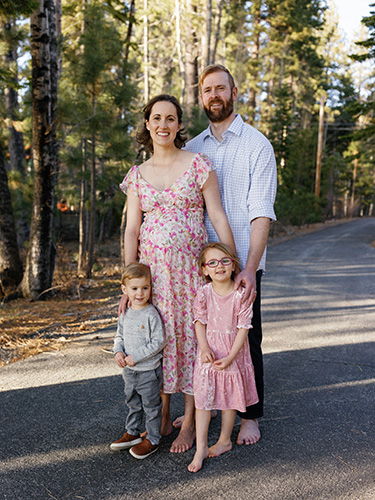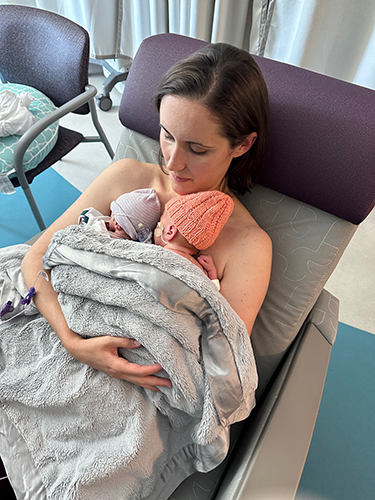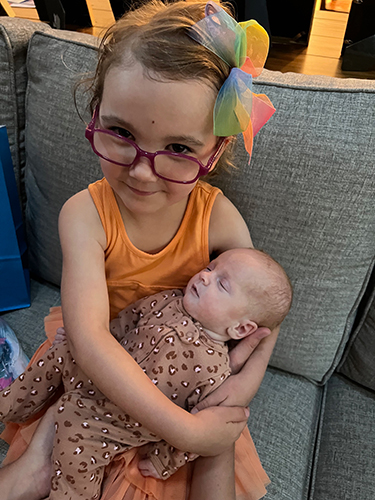Miracle Babies: A 700-Mile Journey to Face the Odds
9.24.2024 | Sarah Radulovich Go
The Referral That Changed Everything
When Amy and Austin discovered they were expecting twins, they were overjoyed to become a family of six. With two children, Charlotte (4) and Hank (2), and two daughters on the way, it was an exciting time for the family. Amy was experiencing common first-trimester pregnancy symptoms she’d felt before. This made the news even more shocking — Amy’s twins were diagnosed with Twin-to-Twin Transfusion Syndrome.

“During my eight-week scan with my obstetrician, they believed the twins might be sharing an amniotic sac, which can be very problematic for the babies’ growth and survival. While they were able to rule that out, by 12 weeks, they could see one of our twins was about a week in growth smaller than the other, which meant we needed further testing,” said Amy.
Living in Lake Tahoe, Nevada posed a challenge as they explored options to find the right nearby care for their twins. But a referral in their second trimester changed everything.
“At 18 weeks, our fears were confirmed—the twins’ lives were in jeopardy. It was a moment that left us reeling but set us on a path to hope. Our obstetrician referred us to Dr. Bettina Paek.” Dr. Paek is the Co-Director of the Maternal Fetal Intervention and Surgery Program at Seattle Children’s. “This recommendation would prove invaluable. Within 36 hours, we were in Seattle, embarking on a journey that would save our babies’ lives.”
Facing the Odds
With Dr. Paek’s expertise, she was able to detect two diagnoses: Twin-to-Twin Transfusion Syndrome and an unequal shared placenta, which meant there was an imbalance of nutrients being distributed to the twins. This would give Molly, the smaller twin, a 10% survival rate. Dr. Paek recommended a fetoscopic laser ablation to treat the Twin-to-Twin Transfusion Syndrome—a procedure performed by only 20 centers nationally including Seattle Children’s, the only center in the Washington, Alaska, Montana, and Idaho region.
Dr. Paek explained the success of the treatment, sharing, “After exploring treatment options, Amy and Austin decided to proceed with fetoscopic laser treatment. Molly was significantly smaller, but she's a fighter. Her blood flow measurements improved, and the twins made it to 33 weeks!”


Compassionate Care
“Dr. Paek was our guiding light — she gave us information, options, hope, and ultimately, she gave our girls their best chance at life. On May 21, we welcomed two baby girls, Elizabeth and Molly. We felt we were truly cared for by Dr. Paek and her team. They will always be in our hearts. They saw my family in need, took care of us and now we have two beautiful babies. Our care team will always be a part of our family and our girls’ history. We want them to understand how they saved their lives.”

Our Message to Other Families
When asked what advice Amy would offer families facing similar challenges, she shared, “It is ok to be scared, overwhelmed, and confused. But don't let those feelings stop you from asking questions that will help you better understand your situation. And if you aren't getting answers that make sense to you or help you, keep asking until they do!”
She continued, “Be sure to ask your care provider for every option available to you and your babies. I fear many families in similar situations don't know that laser ablation is an option. Fortunately, we were referred to Dr. Paek in time. She provided every available option for us to make an informed decision about what was best for our family. If knowledge is power, then knowing your options allows you to exercise that power.”

